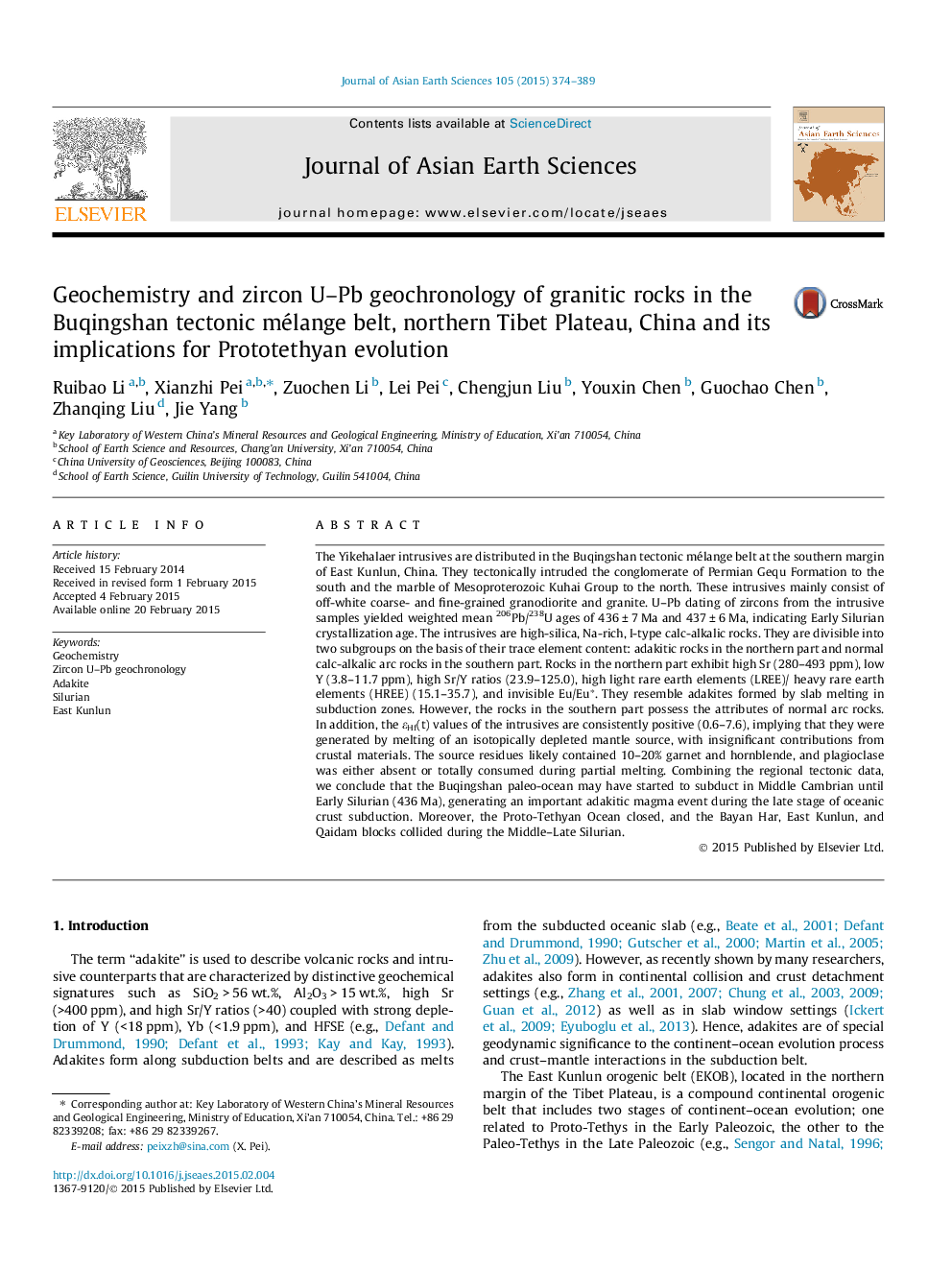| کد مقاله | کد نشریه | سال انتشار | مقاله انگلیسی | نسخه تمام متن |
|---|---|---|---|---|
| 4730504 | 1640364 | 2015 | 16 صفحه PDF | دانلود رایگان |

• The intrusive is divided into adakitic rocks and normal arc rocks chemically.
• The magmas formed by partial melting of subduction slab in Early Silurian.
• This intrusive formed in late stage of oceanic crust subduction.
• The East Kunlun Ocean crust subducted from Middle Cambrian until Early Silurian.
The Yikehalaer intrusives are distributed in the Buqingshan tectonic mélange belt at the southern margin of East Kunlun, China. They tectonically intruded the conglomerate of Permian Gequ Formation to the south and the marble of Mesoproterozoic Kuhai Group to the north. These intrusives mainly consist of off-white coarse- and fine-grained granodiorite and granite. U–Pb dating of zircons from the intrusive samples yielded weighted mean 206Pb/238U ages of 436 ± 7 Ma and 437 ± 6 Ma, indicating Early Silurian crystallization age. The intrusives are high-silica, Na-rich, I-type calc-alkalic rocks. They are divisible into two subgroups on the basis of their trace element content: adakitic rocks in the northern part and normal calc-alkalic arc rocks in the southern part. Rocks in the northern part exhibit high Sr (280–493 ppm), low Y (3.8–11.7 ppm), high Sr/Y ratios (23.9–125.0), high light rare earth elements (LREE)/ heavy rare earth elements (HREE) (15.1–35.7), and invisible Eu/Eu∗. They resemble adakites formed by slab melting in subduction zones. However, the rocks in the southern part possess the attributes of normal arc rocks. In addition, the εHf(t) values of the intrusives are consistently positive (0.6–7.6), implying that they were generated by melting of an isotopically depleted mantle source, with insignificant contributions from crustal materials. The source residues likely contained 10–20% garnet and hornblende, and plagioclase was either absent or totally consumed during partial melting. Combining the regional tectonic data, we conclude that the Buqingshan paleo-ocean may have started to subduct in Middle Cambrian until Early Silurian (436 Ma), generating an important adakitic magma event during the late stage of oceanic crust subduction. Moreover, the Proto-Tethyan Ocean closed, and the Bayan Har, East Kunlun, and Qaidam blocks collided during the Middle–Late Silurian.
Journal: Journal of Asian Earth Sciences - Volume 105, 1 June 2015, Pages 374–389